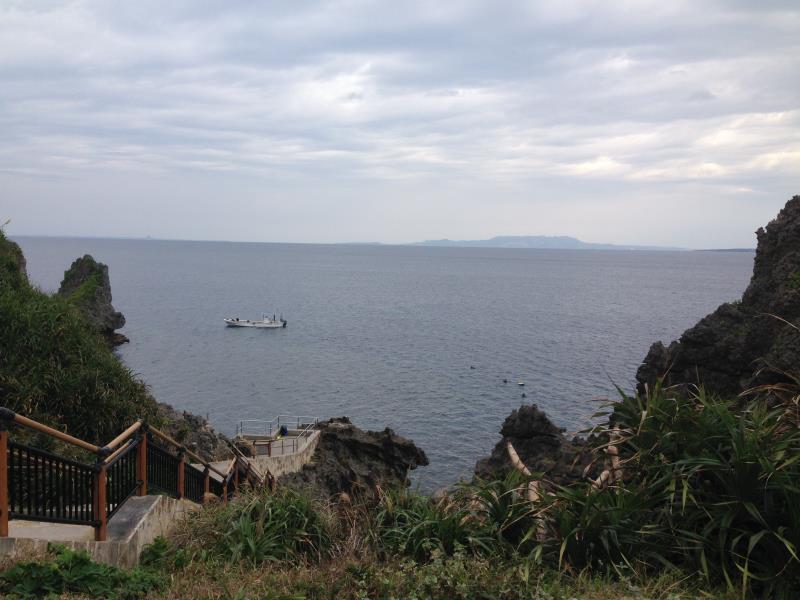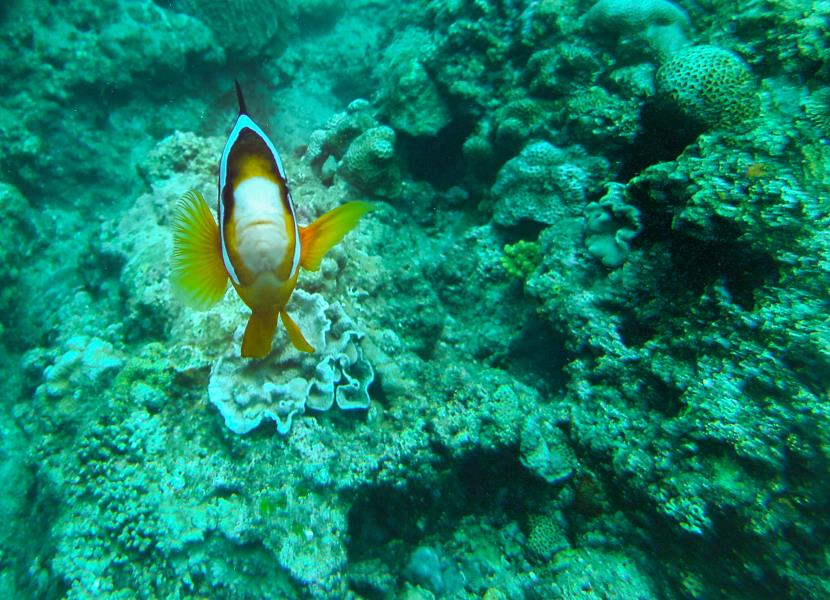 Directory of 51 Dive Sites or Spots for Scuba Diving in Ryukyu Islands, Okinawa and Yonaguni, Japan
Directory of 51 Dive Sites or Spots for Scuba Diving in Ryukyu Islands, Okinawa and Yonaguni, Japan
Part 2: Dive Sites, Marine Life & Environment in Ryukyu Islands, Okinawa and Yonaguni, (Japan)
Many scuba divers are drawn to Japan to explore the infamous underwater ruins off the island of Yonaguni - the western most inhabited island in Japan. Only about 100 km from Taiwan, the Yonaguni rests in warm, clear sub-tropical waters that make for spectacular scuba diving. The underwater ruins near Iseki Point, off the south central coastline of the island of Yonaguni, are famous for the megalithic structures that many believe to be ancient ruins. The dive sites around the walls and stairs of the ruins are also famous for Hammerhead sharks that inhabit the area and school in the hundreds during the winter months. Some divers have reported hammerheads as long as 15 feet to be a common sight year round.
The huge stone ruins collectively are known as Yonaguni Monument. The ruins are found in 5-40 meters of water not far offshore. The ruins, while at found at dive-able depths, are in the open ocean with no sheltering reefs to protect divers from the strong currents and often rough waters and rainy weather. The theory behind the origin of the ruins is that during the last ice age, the world's sea levels were significantly lower due to the fact that the world's water was locked up in the expanded polar ice caps. This last glacial period ended roughly 10,000 years ago when again, the world's coasts were flooded, covering the buildings and civilization that created and inhabited the strange structures. For those interested in knowing more about this theory and understanding the Yonaguni ruins check out the work of author and dive master Graham Hancock and his book, Underworld: The Mysterious Origins of Civilizations. The book features the Yonaguni ruins and other underwater ruins that Hancock and his wife explored, photographed, and wrote about.
The stone passageways and walls of Yonaguni Monument are home to large fish such as Bigeye trevally, barracuda, Dogtooth tuna, Marlin, Sailfish, as well as home to small, more delicate fish like the Pygmy seahorse and Fire dart goby. On rare occasions, divers also encounter the giant Whale shark. You can also see and swim with turtles and even visit the dive site on the monument known as The Turtle. The rock top looks like a giant carving of a turtle and can be seen near the main monument's platform. There are over 70 established dive sites in the monument to explore.
Yonaguni is not the only place to dive in Japan's far southern islands. There are great dive sites along the steep limestone cliffs just offshore Okinawa'a western shore. Off the northwest coast of Okinawa, not far from Churaumi Aquarium, an amazing attraction features whale sharks and a sea turtle pool. The turtle pool features five of the seven sea turtle species in the world. The five Japanese species of sea turtle that scuba divers can hope to see in Okinawa's surrounding waters can be seen at the aquarium; Hawksbill turtle, Loggerhead turtle, Green sea turtle, Kemp's ridley turtle and the Pacific black sea turtle - a rare subspecies of the Green sea turtles that are native to Japan. For more information about the sea turtles of Japan check out The Sea Turtle Association of Japan.
Near Churaumi Aquarium, just off Okinawa'a northwest coast is the diving area known as Motobu Area. The dive site called Gorilla Chop is accessible from the beach and fairly sheltered; it is a good place for beginner or intermediate divers. Gorilla Chop is named after a large black protruding rock. The distinctly white sandy bottom of the dive site and the many coral reef islands harbor Lionfish, and schools of Goatfish and many other reef dwellers.
Down the western coast off central Okinawa's Nakagami District is the popular shore diving area called the Sunabe Seawall. Just offshore from the cement seawall, there are ideal dive sites and abundant coral reef to explore in clear waters. Off the southern tip of Okinawa is the dive site known as the Channel Crevices. This dive site is popular because of the large shallow lagoon that is perfect to swim through and get to the outer reef that skirts the bottom of beautiful Okinawa.
Another great scuba diving area in southern Japan's Ryukyu Islands is the Kerama Islands. The group of 22 small islands is just off the southern tip of Okinawa. Four of the islands are inhabited and cater to tourists and scuba divers. The islands are beautiful but have a rough historic past; they were the staging group for the U.S. invasion and the Battle of Okinawa during WWII. Today you can get there via boat from Okinawa or fly into the small Kerama Airport on Fukaji Island.
Some of the best dive sites on the Kerama Islands are off the west coast of Tokashiki Island. You can get there via boat from Naha, Okinawa and explore this gem of an island. The dive site known as Arigaa Cable literally has old telephone cables you can follow underwater to reef where hundreds of spotted garden eels are famous for poking their many heads out of the sandy bottom. Just a bit deeper you come to a rock with corals growing abundantly where lots of Green Chromis damselfish, Coral trout, and camouflaged Leaf scorpionfish make their home. This is a great dive that gets raving reviews.
One last dive site to mention is on the uninhabited Kerama Island of Kuroshima that translates simply as ‘Black Island’. Off the north side of the small island is the dive site known as Twin Rock. These huge limestone pinnacles just break the water’s surface. Strong currents most of the year make this dive for experts only. The depths of the sea are close by and large fish such as Dogtooth tuna and Eagle rays are common sights. Another option is to dive this site offshore, staying close to the bay where the dive is better for beginners or intermediate divers. Close to shore you will find lots of reef fish and coral and in the shallow pockets between reef islands expect to see the Whitetip reef shark.
Read "Part 1: Overview of Scuba Diving in Ryukyu Islands, Okinawa and Yonaguni, (Japan)"
Top Dive Shops
Certifications Offered
-
Open Water Diver
Reef Encounters , Ryukyu Islands, Okinawa and Yonaguni -
Boat Diver
Reef Encounters , Ryukyu Islands, Okinawa and Yonaguni -
Drift Diver
Reef Encounters , Ryukyu Islands, Okinawa and Yonaguni


